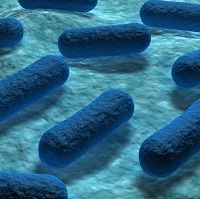Isoform Balance is Key to Curbing Colitis and Colon Cancer
Patients can control and reduce their risk for contracting colon cancer and colitis by maintaining a balance of two major isoforms, according to findings published in the journal eLife.

Patients can control and reduce their risk for contracting colon cancer and colitis by maintaining a balance of two major isoforms, according to findings published in the journal eLife.
Researchers from the University of California, Riverside observed mice models and focused on their intestinal expression of hepatocyte nuclear factor 4-alpha (HNF4-alpha) isoforms P1-HNF4-alpha and P2-HNF4-alpha (P1 and P2, respectively).
It was previously unknown how the isoforms were distributed in the gut and how they each factored into colitis and colon cancer development. The researchers surveyed the stems cells in the colonic wall producing epithelial cell, which traveled to the surface and renewed the intestinal lining every three to five days.
The P1 positive cells were found in the epithelial surface cells in the colonic walls, while the P2 positive cells were mostly seen in the proliferative compartment in the lower half of the crypt, the researchers explained in a press release.
The researchers also, investigated mice, which only expressed P1 or P2, and found that when these mice were exposed to a carcinogen and an irritant to stress, the epithelial lining of the colon showed fewer tumors than the mice with a P1 and P2 balance.
But, when the transgenic mice were treated with only an irritant and no carcinogen, the mice were resistant to colitis. However, the P2 only mice showed more tumors and were significantly more susceptible to colitis, the researchers added.
“P1 and P2 have been conserved between mice and humans for 70 million years,” research leader Frances M. Sladek, added in the statement. “Both isoforms are important and we want to keep an appropriate balance between them in our gut by avoiding foods that would disrupt this balance and consuming foods that help preserve it. What these foods are is our next focus in the lab.”
The researchers also looked into the genes expressed in the P1 and P2 mice, and discovered that a cytokine called RELM beta found in the gastrointestinal tract also linked to colitis was expressed significantly more in the P2 mice than the P1 mice.
“This makes sense since a reduced barrier function means bacteria can go across the barrier, which activates RELM beta,” Sladek said. “We also found that the P2 protein transcribes RELM beta more effectively than the P1 protein.”
The team next plans to explore how diet effects P1 and P2 balance in the gut in addition to investigating if and how obesity and colitis are linked.